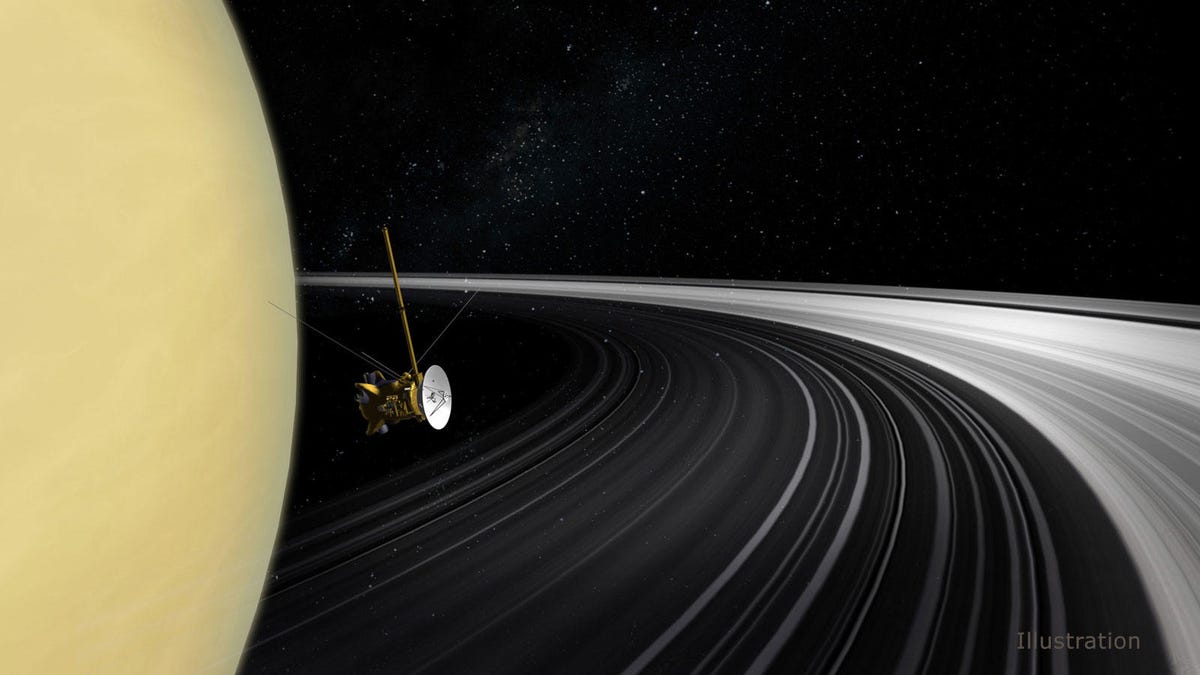Saturn's rings are a relatively new addition, NASA says
The Cassini spacecraft is long gone, but it's still helping scientists make new discoveries about the giant planet.

Arguably the most elegantly beautiful planet in the solar system today, Saturn may've been a far less remarkable pale dot, without its trademark rings, not that long ago. Well, geologically speaking at least.
New analysis of data from NASA's departed Cassini spacecraft reveals that the majestic rings of rock, ice, dust and debris formed between 10 and 100 million years ago. That means dinosaurs with telescopes could've seen a Saturn without rings or with rings just beginning to form.
At the end of its mission, Cassini made a series of dives between the rings and Saturn itself. Sensors on the spacecraft measured, essentially, how much the gravity of the planet and of the rings tugged it back and forth. After accounting for the unexpected effect of strong winds deep in Saturn's atmosphere, scientists were able to calculate the mass of the rings and infer their age.
"There was some effect that changed the gravity field that we had not considered," explained Burkhard Militzer, a professor of earth and planetary science at the University of California, Berkeley, in a release. "That turned out to be massive flows in the atmosphere at least 9,000 kilometers (5,592 miles) deep around the equatorial region. We thought preliminarily that these clouds were like clouds on Earth, which are confined to a thin layer and contain almost no mass. But on Saturn they are really massive."
Dating the rings ends a long-standing debate over whether they formed alongside Saturn at its birth around 4.5 billion years ago or came later. Scientists will continue to investigate exactly how the rings came to be, but their young age bolsters a theory that a comet may've strayed too close to the planet, was ripped to shreds and then became part of the rings. Others think some earlier catastrophic event may've pulverized some smaller icy moons around the planet into the ring debris we see today.
The gravity data collected by Cassini from the rings might also have solved another of Saturn's mysteries: how long a day is on the massive planet.
Saturn's lack of a solid surface with landmarks has made it impossible to track the speed at which the planet rotates. But by measuring the interactions between the rings and Saturn's oscillating gravitational field (the oscillations are caused by vibrations in the planet's interior), it became possible to create a model of the planet's guts, including its rotation rate.
All of this means NASA scientists now believe that the length of a day on Saturn is just 10 hours, 33 minutes and 38 seconds.
Figuring all this out obviously required a lot of math. Here's some more just for fun: A day on Saturn is only 44 percent as long as a day on Earth, which means that big planet is really whipping around quick!
NASA turns 60: The space agency has taken humanity farther than anyone else, and it has plans to go further.
Taking It to Extremes: Mix insane situations -- erupting volcanoes, nuclear meltdowns, 30-foot waves -- with everyday tech. Here's what happens.

